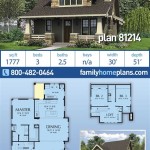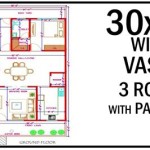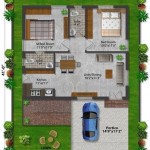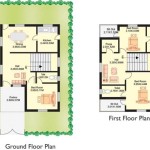Craftsman Style House Floor Plans
Craftsman style homes, known for their emphasis on handcrafted details and natural materials, remain a popular choice for homeowners seeking a blend of comfort and timeless design. Understanding the nuances of Craftsman floor plans is crucial for appreciating the functionality and aesthetic appeal of these homes. This article explores the key characteristics and variations found in Craftsman house floor plans.
One of the defining features of a Craftsman floor plan is its emphasis on open living spaces. While maintaining distinct areas for different functions, such as living, dining, and kitchen, these spaces often flow seamlessly into one another, promoting a sense of community and connection. This open-plan concept allows for easy interaction between family members and guests, fostering a warm and inviting atmosphere.
Built-in features are another hallmark of Craftsman design. These can include bookshelves, window seats, and cabinetry, often crafted from natural wood. These built-ins not only provide practical storage solutions but also contribute to the overall aesthetic of the home, adding character and charm. The emphasis on craftsmanship is evident in the attention to detail and the quality of materials used in these built-in elements.
Fireplaces often serve as a focal point in Craftsman living rooms. Typically constructed from brick or stone, these fireplaces embody the Craftsman ethos of using natural materials and celebrating their inherent beauty. The fireplace creates a cozy and inviting gathering space, reflecting the importance placed on family and relaxation in Craftsman design philosophy.
Front porches are a quintessential element of Craftsman architecture. These porches, often featuring tapered columns and exposed rafters, provide a welcoming transition between the indoors and outdoors. They offer a space for relaxation and socializing, and contribute to the home's curb appeal. The porch becomes an extension of the living space, blurring the lines between inside and outside.
Craftsman floor plans prioritize natural light. Large windows, often featuring multiple panes, are strategically placed to maximize sunlight penetration. This not only brightens the interior spaces but also creates a connection with the surrounding environment, reflecting the Craftsman appreciation for nature.
Variations exist within Craftsman house floor plans, catering to different needs and preferences. Bungalows, a popular subtype of Craftsman homes, typically feature a single-story layout, making them ideal for those seeking easy accessibility and low-maintenance living. Larger Craftsman homes may incorporate two or more stories, offering increased living space and flexibility in room arrangement.
The number of bedrooms and bathrooms in a Craftsman floor plan also varies. From cozy two-bedroom bungalows to spacious four-bedroom family homes, there are Craftsman designs to suit diverse family sizes and lifestyles. The arrangement of these rooms within the floor plan is carefully considered to ensure both privacy and functionality.
Modern interpretations of Craftsman floor plans often incorporate contemporary features while staying true to the core principles of the style. Open kitchens with islands, larger master suites, and dedicated home offices might be included in these updated designs. This allows homeowners to enjoy the classic charm of Craftsman architecture while incorporating modern conveniences and amenities.
Considering the lot size and orientation is crucial when selecting a Craftsman floor plan. A well-designed plan will take advantage of the site's natural features, maximizing views and optimizing sunlight exposure. The relationship between the house and its surroundings is an important aspect of Craftsman design, emphasizing harmony with nature.
Analyzing the flow and functionality of a Craftsman floor plan is essential for ensuring that it meets the needs of the occupants. The placement of rooms, the traffic patterns, and the overall layout should be carefully considered to create a comfortable and efficient living space. A well-designed floor plan will enhance daily life and create a sense of ease and well-being.
Examining the architectural details in a Craftsman floor plan, such as the type of roof, the window styles, and the exterior finishes, is important for understanding the overall aesthetic of the home. These details contribute to the unique character and charm of Craftsman architecture, reflecting the emphasis on handcrafted elements and natural materials.
Researching different Craftsman floor plan options and consulting with architects and builders can help homeowners find the perfect design for their specific needs and preferences. Understanding the nuances of Craftsman architecture and working with experienced professionals can ensure a successful building project and a home that embodies the timeless beauty and functionality of the Craftsman style.

Bungalow Floor Plans Style Homes Arts And Crafts Bungalows Craftsman House

Craftsman Style House Plans With Bungalow Features

Craftsman Style House Plans Big And Small Houseplans Blog Com

Traditional Style With 3 Bed 2 Bath Car Garage House Plans Dream Craftsman

Informally Elegant 4 Bed Craftsman Style House Plan 710069btz Architectural Designs Plans

Affordable Craftsman Style House Plan 908 9081

Small Craftsman Cottage Plan 94371 At Family Home Plans In Our Best Ing Floor Collection Style House

Durham Drive Craftsman House Plans Ranch

Two Story 5 Bedroom Craftsman Home Floor Plan

House Plan 91885 Craftsman Style With 2615 Sq Ft 5 Bed 3 Bath








